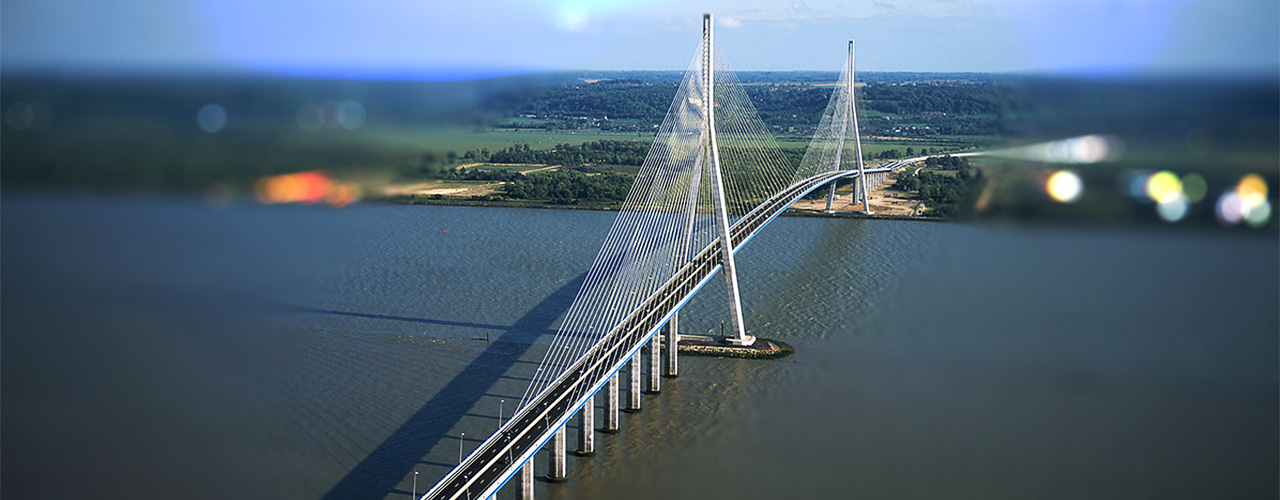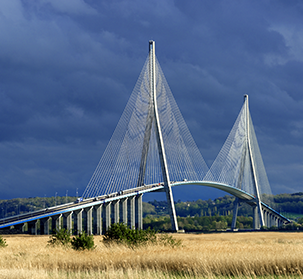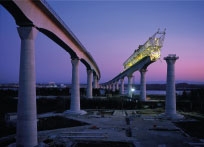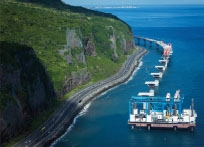France, 1990-1995
When it was inaugurated in 1995, the Normandy Bridge was the largest cable-stayed bridge in the world. Crossing the Seine estuary in one go over a distance of 2.14 kilometres, this French structure links the industrial centre of Le Havre to the tourist bank of Honfleur.
It extends its mixed span over 856 metres in a zone swept by winds that can exceed 100 km/h. The choice of a cable-stayed bridge was an economical and aesthetic solution that met the limitations imposed by the site: a conventional bridge would have required the presence of supports that would have been resistant to boat impact; a suspension bridge would have generated significant additional costs related to its maintenance. To cross a 6% slope, the concrete decks of the north access viaduct had to be installed using a new technique patented by Bouygues at the time: the so-called lift-launch method.
Today, this iconic structure is a major transport route that fosters the economic development of the region.





